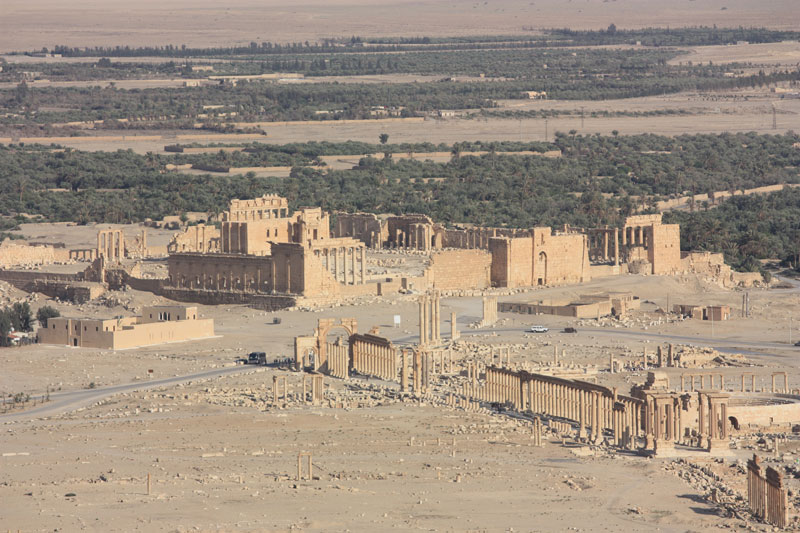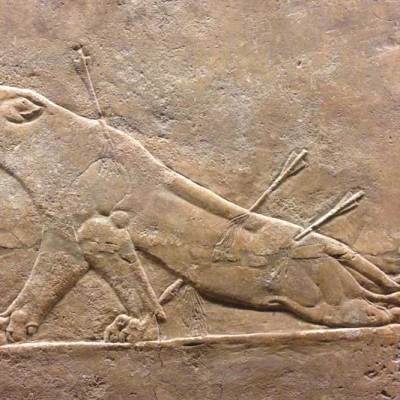As I write, the news is that ISIS has been using the 2nd century AD theatre at Palmyra for executions but says it will not demolish the buildings. To do so would be a challenge anyway, given Palmyra’s enormous size and the huge monumental structures on the site, mostly dating from the first and second centuries AD. Palmyra (‘place of palms’, the Roman name for Tadmor) was rediscovered in the late 17th century, and the publication of The Ruins of Palmyra by Wood and Dawkins in 1753 caused great excitement. Country house owners vied with each other to have ‘Palmyra ceilings’, based on the zodiac ceiling in the great Temple of Bel, perhaps the most famous being Robert Adam’s at Osterley Park, with others at Blair Castle, Dumfries House, Stratfield Saye, West Wycombe Park and elsewhere. Lady Hester Stanhope was also a famous visitor to Palmyra in 1812.
To visit Palmyra is an unforgettable experience. Built on an oasis in the Syrian desert, on trade routes to Damascus and the coast from the Euphrates and beyond, it became immensely rich on the proceeds of the caravan trade. The Tariff of Palmyra is a famous bilingual Greek and Palmyrene inscription from the third century AD, the longest known in the Palmyrene version of Aramaic, which lays down prices for commodities from slaves to oil and perfume. It was the proceeds from this trade that enabled the inhabitants to build Palmyra’s great temples to Bel, Baal Shamin, Allat and other eastern deities, its long colonnaded street, monumental arch and theatre. The temples are built in grand Hellenistic style – but the dress, the women’s veils and the frontality of the portrait busts of the Palmyrenes and their families that lined their huge frescoed tombs reveal a striking mixture of classical and eastern influences. Palmyra’s location made it a middle ground between the Roman and the Parthian empires, and the many funerary sculptures in the Damascus Museum portray a rich merchant elite confident in its mixed identity.
In the third century AD the Palmyrene ruler and Roman governor Odenathus defeated Shapur I, the second of the new Sasanian rulers of Persia. He then made a bid to take Shapur’s title, was killed and succeeded by his equally ambitious wife Zenobia. However her troops could not withstand the Roman emperor Aurelian and Palmyra surrendered to Rome in AD 272. Less is known of Palmyra in the later Roman period, but recent excavation by Polish archaeologists has revealed several large churches, probably of the sixth century.
Related Articles
Haunting 19th-century photographs of Palmyra
Can Iraq’s antiquities be saved? Mark Altaweel makes the case for intervention.
How can we protect cultural sites in war zones? Peter Stone discusses Blue Shield.
The destruction of Nimrud is a crime against humanity Maggie Gray on the cultural desecration of Iraq.
Lead image: used under Creative Commons licence (CC BY-SA 2.0)



